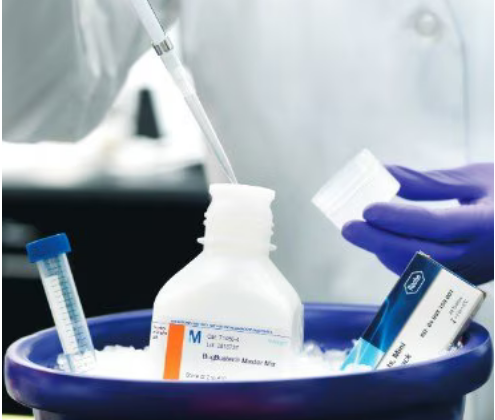 首页>
生物试剂
首页>
生物试剂
商家描述
售后服务
商家资质信息
产品评价(0)
Expansion of a GGGGCC (G4C2) hexanucleotide repeat sequence in the non-coding region of human chromosome 9 open reading frame 72 or C9orf72 (also known as ALSFTD, FTDALS; Gene ID 203228) is the most common genetic abnormality in familial and sporadic frontotemporal dementia (FTD) and motor neuron disease (MND), with amyotrophic lateral sclerosis (ALS) as the most frequent form. The number of hexanucleotide repeats in the normal population ranges from 2 to 24, whereas up to several thousand repeats (700 - 4,400 repeats) are found in the pathologically expanded allele. Unconventional repeat-associated non-ATG-initiated translation (RANT) of the GGGGCC repeats in the three alternate reading frames from both sense and antisense transcripts generates five types of dipeptide repeat (DPR) protein species, each composed of repeating units of two amino acids, glycine-alanine (GA), glycine-proline (GP), glycine-arginine (GR), alanine-proline (AP), proline-arginine (PR), respectively. The sense transcript (5′-GGGGCC-3′ hexanucleotide repeats) is translated through repeat-associated non-ATG (RAN) translation such that poly- (Gly- Ala), poly-(Gly-Pro), and poly-(Gly-Arg) proteins were produced. The anti-sense transcript (containing 5′-GGCCCC-3′ (G2C4) hexanucleotide repeats is translated through repeat-associated non-ATG (RAN) translation producing poly-(Pro-Ala), poly- (Pro-Arg), poly- (Gly-Pro) proteins. The antisense proteins accumulate in cytoplasmic aggregates in affected brain regions, including the frontal and motor cortex, hippocampus, and spinal cord neurons.,官网链接:https://www.sigmaaldrich.cn/product/mm/abn1356
默克
科研、开发、生产。
作为生命科学行业的全球领先供应商,我们致力于为科研、生物技术开发和生产,以及制药药物疗法开发和生产提供各类解决方案和服务。
 会员登录
会员登录.getTime()%>)
 购物车()
购物车()

 成功收藏产品
成功收藏产品
